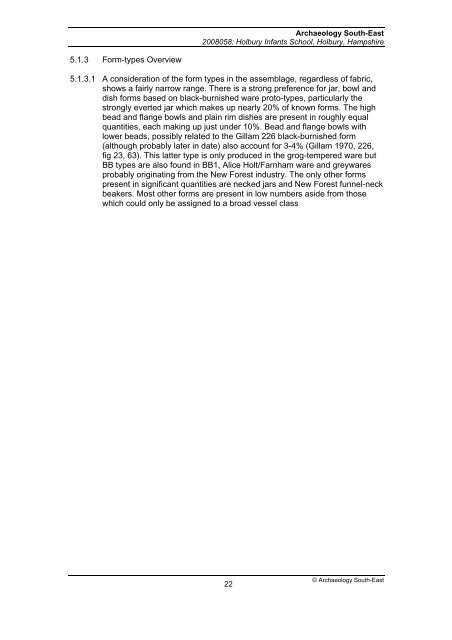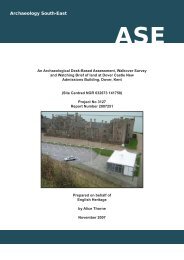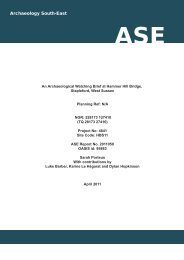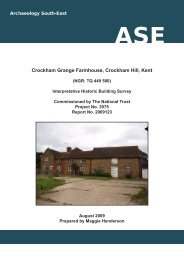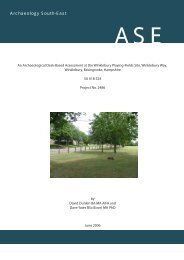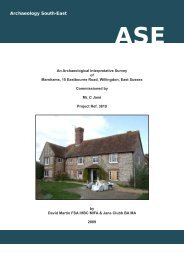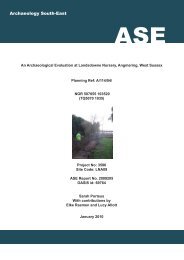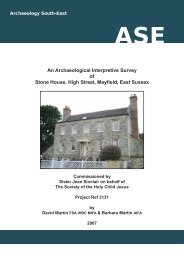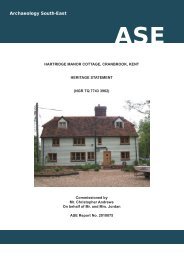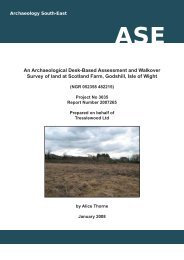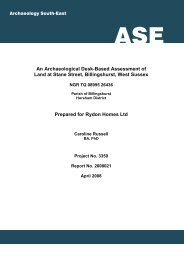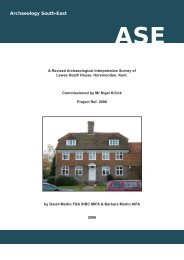ASE front cover - Archaeology South-East
ASE front cover - Archaeology South-East
ASE front cover - Archaeology South-East
You also want an ePaper? Increase the reach of your titles
YUMPU automatically turns print PDFs into web optimized ePapers that Google loves.
<strong>Archaeology</strong> <strong>South</strong>-<strong>East</strong>2008058: Holbury Infants School, Holbury, Hampshire5.1.3 Form-types Overview5.1.3.1 A consideration of the form types in the assemblage, regardless of fabric,shows a fairly narrow range. There is a strong preference for jar, bowl anddish forms based on black-burnished ware proto-types, particularly thestrongly everted jar which makes up nearly 20% of known forms. The highbead and flange bowls and plain rim dishes are present in roughly equalquantities, each making up just under 10%. Bead and flange bowls withlower beads, possibly related to the Gillam 226 black-burnished form(although probably later in date) also account for 3-4% (Gillam 1970, 226,fig 23, 63). This latter type is only produced in the grog-tempered ware butBB types are also found in BB1, Alice Holt/Farnham ware and greywaresprobably originating from the New Forest industry. The only other formspresent in significant quantities are necked jars and New Forest funnel-neckbeakers. Most other forms are present in low numbers aside from thosewhich could only be assigned to a broad vessel class22© <strong>Archaeology</strong> <strong>South</strong>-<strong>East</strong>


